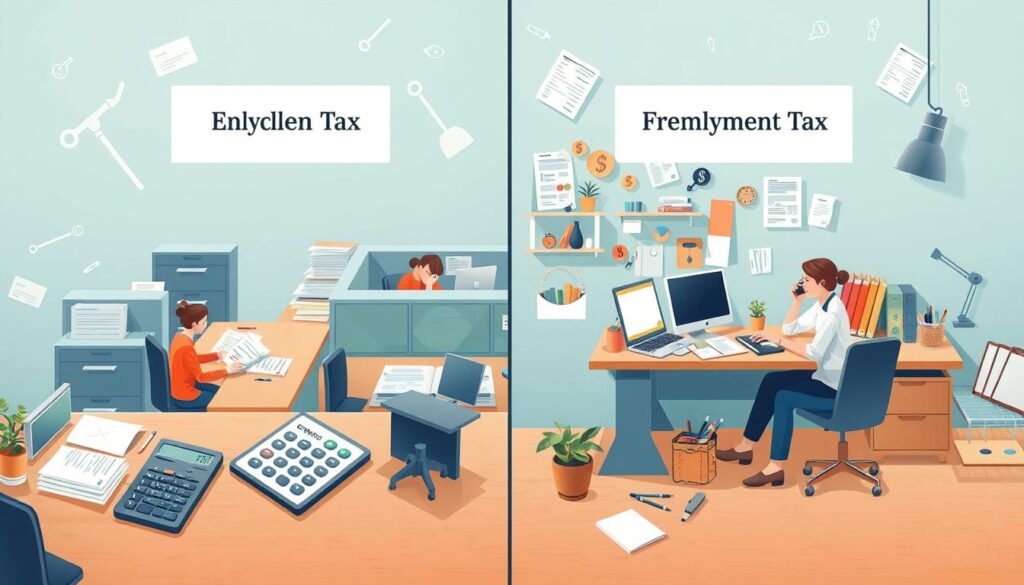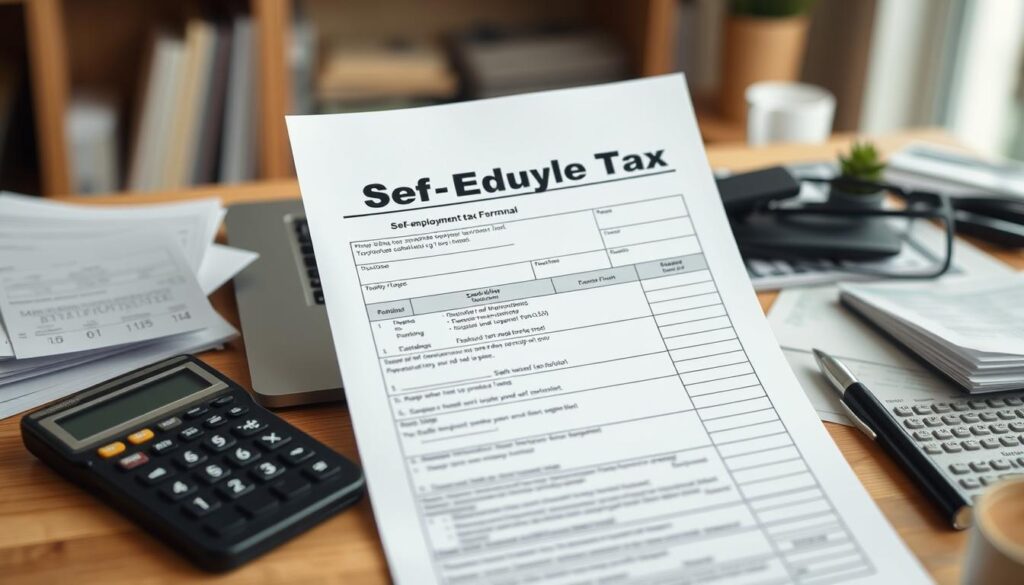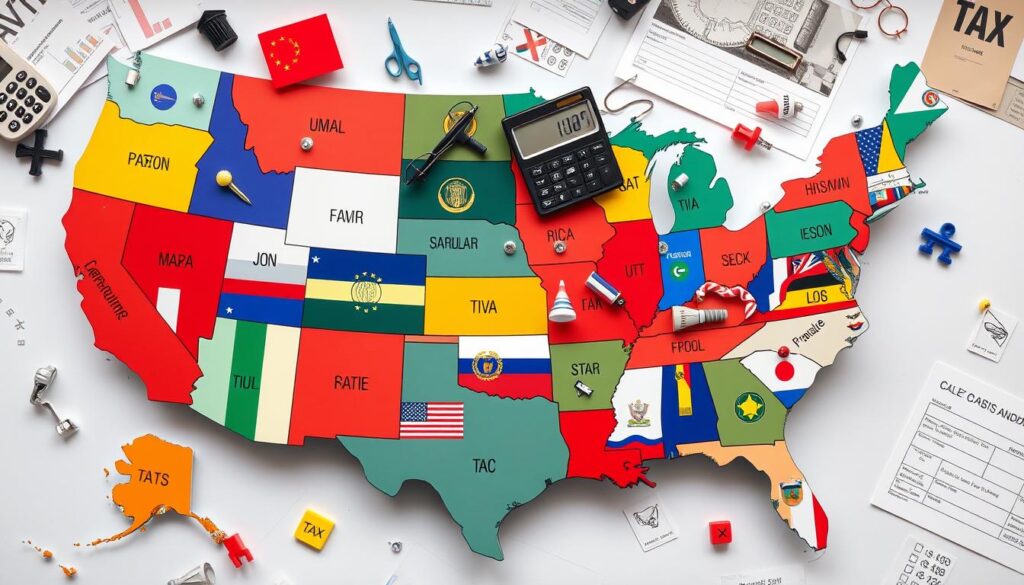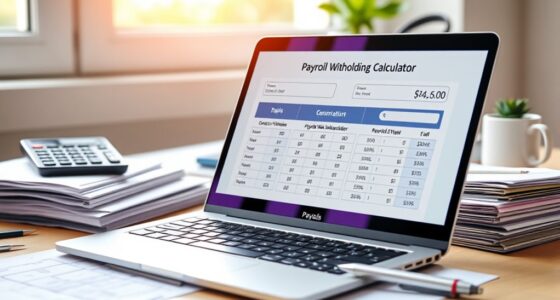As you embark on your journey of self-employment, the freedom and flexibility it offers can be exhilarating. However, along with these benefits comes the responsibility of managing your own taxes—a daunting task for many. Understanding the ins and outs of self-employment tax is not just about compliance; it’s about ensuring you secure your future benefits. Just like the gears of a well-oiled machine, knowing how the IRS self-employment tax rules function helps you plan effectively and avoid the stress of unexpected financial burdens. After all, you deserve peace of mind as you build your legacy and navigate this exciting path.
The self-employment tax rate is set at 15.3%, which includes 12.4% for Social Security and 2.9% for Medicare, making it essential for you to grasp these numbers and their implications on your income1. Understanding who is subject to self-employment tax and its impact on your overall financial picture is vital. It helps you become proactive rather than reactive when it comes to your tax obligations.
Key Takeaways
- Self-employment tax is critical to funding Social Security and Medicare.
- The total self-employment tax rate stands at 15.3%.
- Quarterly tax payments are required for self-employed individuals.
- Understanding your tax obligations is essential for better financial planning.
- Being informed about self-employment tax can prevent unnecessary stress later.
What is Self-Employment Tax?
Understanding the self-employment tax definition is crucial for self-employed individuals. This tax encompasses both Social Security and Medicare taxes, totaling 15.3% of net self-employed earnings. Of this amount, 12.4% is allocated for Social Security on the first $168,600 of earnings in 2024, while Medicare tax is set at 2.9% on unlimited earnings. The self-employment tax importance cannot be overstated as it helps fund essential programs that provide benefits during retirement, ensuring you can receive financial support when needed.

Definition and Importance
To clarify, self-employed individuals are responsible for paying both the employer and employee portions of these taxes. This means if you earn $200,000 as a single filer from self-employment activities, your income becomes subject to these taxes based on 92.35% of your net earnings, amounting to a significant tax liability. If you believe that understanding who pays self-employment tax is important, rest assured that anyone earning $400 or more from self-employment must comply with these tax obligations.
Who is Subject to Self-Employment Tax?
- Individuals earning at least $400 from self-employment activities.
- Persons participating in gig economies or freelance work that generates taxable income.
- Self-employed business owners responsible for their tax obligations, including estimated taxes.
Self-employed individuals must proactively pay their employment taxes and estimated income tax liabilities to avoid penalties. Remember that those who owe $1,000 or more in federal taxes for the year usually need to make estimated quarterly tax payments using Form 1040-ES. This proactive approach ensures better financial planning and compliance with tax regulations234.
Understanding Your Tax Obligations
As a self-employed individual, it is crucial to understand your tax obligations, including estimated taxes and filing requirements. Estimated taxes are payments made to the IRS on a quarterly basis to cover income tax and self-employment tax liabilities. You should be aware that if your net earnings from self-employment are $400 or more, you must file an income tax return, fulfilling IRS self-employed obligations5. Additionally, you will likely need to submit specific forms such as Schedule C and Schedule SE to report your income and calculate your taxes5.
Estimated Taxes Explained
Estimated taxes help you stay compliant with your federal tax obligations. For most self-employed individuals, an estimated tax payment is required to cover anticipated liabilities related to income tax, social security, and Medicare. The estimated taxes are based on expected earnings for the year and are typically due on April 15, June 15, September 15, and January 155. You will need your prior year’s annual income tax return to complete Form 1040-ES5. It is important to note that the self-employment tax rate stands at 15.3%, which includes a 12.4% portion for social security and a 2.9% portion for Medicare6.
Filing Requirements for Self-Employed Individuals
Self-employed filing requirements depend on your net earnings and business structure. If your business generates $400 or more in net earnings, you must file an income tax return, utilizing Form 1040 and possibly adhering to additional requirements depending on your business entity, such as sole proprietorships or partnerships5. Moreover, when filing, you may also need to report certain deductions available for self-employed individuals, including health insurance costs and home office deductions5.
| Filing Requirement | Threshold | Related Forms |
|---|---|---|
| Net Earnings from Self-Employment | $400 or more | Form 1040, Schedule C |
| Self-Employment Tax Payment | $400 or more | Schedule SE |
| Social Security Wage Limit | $168,600 for 2024 | Part of Schedule SE |

Calculating Your Self-Employment Tax
Understanding the process of calculating your self-employment tax is crucial for fulfilling your tax obligations. Knowing the self-employment tax rate and how to compute your net earnings will simplify the process and ensure compliance.
The Self-Employment Tax Rate
The self-employment tax rate is currently set at 15.3%, which consists of 12.4% for Social Security and 2.9% for Medicare taxes7. This tax applies to individuals with self-employed net earnings of $400 or more, making it essential for anyone in that category to be aware of their tax responsibilities8. Additionally, high-income earners may incur an extra 0.9% Medicare tax on earnings exceeding specific thresholds, which differ based on filing status9.
How to Calculate Your Net Earnings
Calculating your net earnings involves subtracting your business expenses from your gross income. For self-employment tax purposes, you multiply your total self-employment net income by 92.35% before applying the self-employment tax rate89. This ensures you only tax the appropriate portion of your earnings and helps to accurately gauge how much self-employment tax you owe. Complete this calculation on IRS Form 1040 Schedule SE, where you’ll document your findings for your tax return7.

Deductions You Can Claim
Understanding the deductions that you can claim is crucial for effectively managing your self-employment taxes. Various business expenses can significantly lower your taxable income, making it essential to keep accurate records of what you spend on your business operations.
Business Expenses and Their Impact
Business expenses that you incur, such as office supplies and equipment, play a vital role in determining your tax liability. According to the Tax Cuts and Jobs Act (TCJA), certain deductions, such as the home office deduction, allow you to deduct related expenses like rent, mortgage interest, and utilities10. The home office deduction can be calculated using a simplified method, which involves multiplying an IRS-determined rate by the square footage of the home office10.
Other deductible expenses include:
- Business mileage at 67 cents per mile for the 2024 tax year11.
- Health insurance premiums that you pay for yourself and your family, which can directly reduce your taxable income through health insurance tax deduction10.
- Meals related to business activities, making it an eligible business expense10.
Health Insurance Deductions for the Self-Employed
Self-employed individuals can benefit from the health insurance tax deduction by deducting 100% of health, dental, and long-term care premiums as an adjustment to income without the need to itemize10. This can significantly reduce your taxable income and streamline your filing process.
Maintaining detailed records of your health insurance payments and other business expenses can ensure that you are fully leveraging your self-employment tax deduction. Your ability to confidently claim these deductions can provide greater financial flexibility as you grow your business.

Recordkeeping Strategies
Effective recordkeeping is crucial for self-employed individuals looking to manage their finances and taxes comprehensively. Detailed records provide a clear picture of your income and expenses, which helps streamline tax preparation and maintain compliance with IRS regulations. Engaging in organized recordkeeping for self-employed allows you to track your financial health accurately.
Importance of Detailed Recordkeeping
Maintaining accurate and thorough records aids in calculating and substantiating deductions, ensuring you don’t overlook any potential savings. According to IRS guidelines, keeping documents for at least three years after filing your tax return is advisable12. If you plan to claim a bad debt deduction or loss from worthless securities, retaining these records for seven years is essential13. In cases of income underreporting, records should be kept for six years, especially if underreporting exceeds 25% of gross income13. For fraudulent returns or when no return was filed, documents should be kept indefinitely13.
Tools and Software for Managing Records
Utilizing tax recordkeeping tools can significantly simplify your record management process. Software options like QuickBooks and FreshBooks help automate tasks, ensuring that all financial documents are stored securely. It is recommended that small business owners maintain seven essential records: invoices and receipts, bank statements, credit card statements, tax returns, profit and loss statements, inventory records, and mileage logs12. Employing a digital tax management system can enhance accessibility while meeting IRS standards, preventing penalties for inadequate recordkeeping13.

| Record Type | Retention Period | Notes |
|---|---|---|
| Tax Returns | 3 years | Essential for audit support |
| Employment Tax Records | 4 years | Includes wages, tips, and pensions14 |
| Bad Debt Deductions | 7 years | For losses from securities |
| Underreported Income | 6 years | If more than 25% of gross income |
| Fraudulent Returns | Indefinitely | Keeps you protected |
In summary, adopting comprehensive detailed recordkeeping practices and utilizing effective tools will not only assist you in meeting IRS requirements but will also help streamline your self-employment financial management131412.
Filing Your Self-Employment Tax Return
When it comes to filing your self-employment tax return, understanding the necessary forms and deadlines is crucial for compliance. The IRS requires self-employed individuals to complete specific forms to accurately report their income and calculate taxes owed. By staying organized and proactive, you can navigate this process with ease.
Forms You Need to Complete
To start the process, you will need to fill out Form 1040 alongside Schedule C, which reports your business income or loss. An additional form, Schedule SE, is necessary to document the self-employment tax amount. Be aware that if your net earnings from self-employment are at least $400, you are required to report it on the 1040 tax form15.
Deadlines You Should Remember
Tax returns for self-employed individuals are typically due on April 15. This is an important deadline to keep in mind to avoid penalties. If you anticipate owing taxes, quarterly estimated tax payments are often required, and budgeting 25-40% of your quarterly profit for taxes can be a helpful strategy15. Mark your calendar and ensure that you remain compliant with all tax deadlines.

Paying Your Self-Employment Tax
As a self-employed individual, paying self-employment tax is an important aspect of your financial responsibilities. Understanding the payment options for self-employed can significantly simplify this process, making it easier to stay compliant and avoid any unnecessary penalties.
How to Make Payments
You can make your tax payments quarterly using IRS Form 1040-ES. The IRS has designated specific due dates for these estimated payments, generally falling on April 15, June 15, September 15, and January 15 of the following year, especially if your earnings exceed $1,000. It is crucial to ensure timely compliance with these dates to avoid tax penalties and additional interest charges that can accumulate rapidly on unpaid taxes1617.
Avoiding Penalties and Interest
To avoid penalties, keep in mind that underpayment of quarterly taxes can lead to financial repercussions. Self-employed individuals should maintain clear and distinct records of personal and business expenses, as this can streamline the tax-filing process significantly. Moreover, it’s advisable to keep all tax records and supporting documents for up to seven years to avoid complications in case of audits1617. Another strategy for avoiding tax penalties involves utilizing the various payment options for self-employed that allow flexibility in meeting tax obligations.

| Payment Options | Description |
|---|---|
| Online Payments | Quick and easy method to pay via IRS e-Pay or through tax preparation software. |
| Check or Money Order | Mailing a check directly to the IRS, ensuring it is sent in time to meet the deadline. |
| Direct Debit | An automatic withdrawal from your bank account set up during the e-filing process. |
| Payment Plans | Setting up an installment agreement if you cannot pay the full amount owed. |
Being mindful of your payment options and maintaining organized records will assist you in managing your self-employment taxes effectively while avoiding potential pitfalls16.
Common Mistakes to Avoid
As a self-employed individual, it’s crucial to recognize and steer clear of common pitfalls that can lead to significant financial repercussions. You may encounter self-employment mistakes that could adversely affect your tax situation. Two major areas to be cautious of include misclassifying your business and overlooking valuable deductions.
Misclassifying Your Business
Misclassifying your business structure can have substantial tax implications. Accurate business classification helps in determining the correct tax obligations and applicable deductions. Self-employed individuals often face business classification errors rooted in a lack of understanding about different business types. For instance, incorrectly classifying your business as a sole proprietorship when it should be an LLC can lead to higher taxes and liability risks.
Overlooking Deductions
Many self-employed individuals tend to overlook common tax deductions that could significantly reduce their taxable income. Keeping meticulous records of income and expenses is fundamental. Some frequently missed deductions include home office expenses, health insurance premiums, and contributions to retirement accounts such as Simplified Employee Pensions (SEPs)1819. By being proactive in identifying common tax deductions overlooked, you can enhance your tax savings and optimize your financial situation.

| Mistake | Description | Consequences |
|---|---|---|
| Business Misclassification | Incorrectly identifying your business type. | Higher taxes, liability risks. |
| Overlooking Deductions | Failing to claim deductions you are eligible for. | Increased taxable income, higher taxes owed. |
Understanding these self-employment mistakes and how to avoid them is essential for maintaining a healthy financial future1819.
Self-Employment Tax vs. Regular Employment Tax
Understanding the differences between self-employment tax and regular employment tax is crucial for effective financial planning. This comparison highlights key aspects that can impact your tax dues and overall financial strategy.
Comparing Tax Rates
Self-employment tax, a flat rate of 15.3%, comprises a 12.4% Social Security tax and a 2.9% Medicare tax. In contrast, employees and their employers each pay 7.65% for FICA taxes, together totaling 15.3%2021. For self-employed individuals, the threshold for being liable for self-employment tax is $400 in net earnings20. Notably, once self-employment income exceeds $168,600 for a given tax year, no additional Social Security tax applies, though Medicare tax continues without a cap on earnings20. This can lead to a significant difference in what you pay depending on your income level.
Benefits and Drawbacks of Each
There are pros and cons of self-employment tax that differ from those of traditional employment tax. On one hand, self-employed individuals enjoy the benefit of setting their own schedules and having complete control over their business. On the downside, they must shoulder the entire burden of the self-employment tax, which can feel high compared to the employee contribution2021.
In addition, self-employed individuals may deduct 50% of their self-employment tax when calculating their federal income tax20, which can lower their overall taxable income. Regular employees, on the other hand, do not have this capability, as their federal tax obligations are typically predetermined through the withholding system established via Form W-421.

Implications of Self-Employment on Your Tax Return
When you work for yourself, the implications for tax returns can get complex. One essential form you’ll encounter is Schedule C, which summarizes your profit or loss from business operations. This reporting step is crucial because the results impact your overall taxable income and, consequently, your tax liability.
Schedule C: Profit or Loss from Business
Schedule C is designed for self-employed individuals to declare their income and expenses. You will report gross receipts and then subtract expenses to determine your net profit or loss. Keep in mind that business expenses can significantly reduce your taxable income. For instance, self-employed persons are allowed deductions for various operational costs such as office supplies, mileage, and even home office expenses. This is vital because a lower net profit may result in a lower self-employment tax, which has its associated rate at 15.3%. This rate is composed of 12.4% for Social Security and 2.9% for Medicare taxes22
Self-Employment Tax on Your 1040 Form
Once you’ve completed Schedule C, the next step is reporting this information on your IRS Form 1040. The self-employment income derived from Schedule C flows into your 1040, directly influencing your total income. Remember that if your self-employment income exceeds $400, you are mandated to pay self-employment taxes7. The self-employment tax is calculated based on the net earnings from the Schedule C, which you must accurately transfer to the 1040 form for compliance. This process underscores the importance of precise bookkeeping and tax reporting as your profits directly affect your tax situation.
As your income increases, understanding the implications for tax returns becomes even more crucial. For example, taxpayers with higher self-employment earnings may cross tax brackets, influencing their effective tax rates. Thus, it’s imperative to maintain an accurate account of all earnings and deductions to optimize your tax liabilities and fulfill your obligations effectively23.
State-Level Considerations
When navigating your self-employment journey, understanding state taxes for self-employed individuals is crucial. These taxes can vary significantly across different regions, which can lead to different financial implications depending on where you operate. Being aware of these variations is essential for successful tax management.
State Taxes for Self-Employed Individuals
Each state has distinct definitions and regulations regarding state taxes self-employed. For instance, some states may impose an entity-level tax on LLCs, impacting how you handle your business finances. Familiarizing yourself with these requirements can prevent unexpected tax liabilities and ensure compliance. In New York and Texas, both states require self-employed individuals to account for state-specific credits, which can contribute positively to your overall tax situation24.
Local Taxes You Need to Know About
Beyond state obligations, local tax considerations also play a significant role in your overall tax picture. Municipalities may have their own tax structures that come into play for self-employed individuals. Ignoring these can lead to underpayment of taxes, so staying informed about local rates and regulations is vital. Additionally, understanding how local taxes can interact with your self-employment tax by state will allow for better financial planning and ensure you meet all your obligations without penalties.

Self-employment tax, which stands at 15.3%, covers Social Security and Medicare25. This tax rate is higher as the IRS considers you both the employee and employer, hence the increased liabilities. For those looking to manage their tax burden more effectively, forming an S Corporation might be an option worth exploring, as it can provide potential savings and flexibility in income withdrawal25.
Resources for Self-Employed Taxpayers
As a self-employed individual, accessing reliable resources can significantly simplify your tax experience. Numerous self-employed resources are designed to support you in understanding and fulfilling your tax responsibilities. Whether you’re in need of a tax calculator for self-employed individuals or seeking guidance on hiring tax professionals, there are tailored tools available.
Online Tools and Calculators
Utilizing online tools can enhance your tax preparation and planning. For instance, the IRS provides reliable information on various aspects of taxes relevant to self-employed individuals, including guidelines for standard mileage rates26. Additionally, there are many user-friendly tax calculators available, such as those from TaxAct, which offer features like the self-employment tax calculator and Xpert Assist to help you maximize deductions27. These tools simplify complicated calculations, providing peace of mind during the filing process.
Professional Help: When to Consult an Accountant
It is often wise to consider hiring tax professionals, especially if your situation involves complexities that exceed basic filing. Many self-employed individuals hire tax professionals to prepare their income tax returns, which can help ensure compliance and optimal deductions27. Engaging a professional can be particularly beneficial when navigating intricate tax laws, understanding business tax credits, or if you’re uncertain about recordkeeping requirements2628.

| Resource | Purpose | Example |
|---|---|---|
| Online Calculators | Assist in tax calculations | TaxAct’s self-employment tax calculator |
| IRS Resources | Provide official tax guidelines | IRS Small Business Self-Employed Tax Center |
| Tax Professionals | Offer expert tax preparation and advice | Local accountants or online services |
Planning for Future Tax Years
Effective tax planning for the self-employed lays a strong foundation for managing your tax liabilities in the future. Implementing sound strategies now can help minimize the impact of taxes in upcoming years. Establishing retirement options not only aids in saving for your future but can also provide immediate tax advantages.
Strategies for Managing Your Tax Liability
Understanding the intricacies of your financial landscape enables you to manage your tax obligations effectively. Setting aside funds for estimated tax payments is crucial, particularly since self-employed individuals with net earnings of $400 or more must pay self-employment tax29. Highlighted below are some strategies to consider:
- Utilize retirement accounts such as a SEP IRA, which allows for a maximum contribution of $66,000 for 202330.
- Consider a Solo 401(k), enabling up to $22,500 in contributions, plus an additional $6,500 if you’re over 5030.
- Investigate Cash Balance Pension Plans as they may enable significant income sheltering.
Importance of Retirement Plans for the Self-Employed
Establishing solid retirement plans for self-employed individuals is paramount. These plans not only assist in building your retirement savings but can also reduce current taxable income. For instance, businesses can profit-share contributions of up to 25% of payroll in a Solo 401(k) plan30. Moreover, utilizing these retirement vehicles can enhance your overall financial stability.

Additionally, keeping abreast of any tax law changes can further influence your tax planning; for example, some tax benefits are scheduled to expire by the end of 202531. Thus, proactive measures ensure you remain informed and strategically positioned to navigate your tax landscape effectively. Failing to do so may leave you paying more than necessary.
Keeping Up with Tax Law Changes
Staying informed about tax law changes is crucial for self-employed individuals. Keeping abreast of new regulations and updates helps ensure compliance and effective financial planning. The IRS tax changes can directly impact your self-employment tax obligations, which may evolve from year to year.
How Changes Affect Your Self-Employment Tax
Tax law changes self-employed individuals need to monitor include various deductions and limitations. For example, owners of certain businesses can deduct up to 20% of qualified business income under Section 199A32. Additionally, businesses can deduct up to 50% of entertainment expenses related to trade or business activities32. It’s important to note that the limitation on business interest expense applies to businesses with average annual gross receipts of $25 million or less32. Understanding these deductions can help you optimize your tax return.
Staying Informed on Tax Updates
To keep up with self-employment tax updates, consider subscribing to IRS newsletters or working closely with a tax professional. The Social Security tax rate for self-employment taxes stands at 12.4% of net earnings from self-employment, with a limit set at $168,600 for 202433. You should also be aware of the Medicare tax rate, which is 2.9% of net earnings with no dollar limit33. Additionally, there’s an extra Medicare tax of 0.9% on income exceeding $250,000 for married couples filing jointly and $200,000 for single filers33. Being well-informed helps prepare you for any changes in self-employment tax responsibilities.

Conclusion: Your Self-Employment Tax Checklist
Being self-employed comes with unique tax responsibilities that demand your attention. To ensure your financial stability, it’s crucial to maintain an organized approach. A self-employment tax checklist can guide you through essential forms, deadlines, and deductions, streamlining your tax process and enhancing your preparedness.
Key Takeaways for Self-Employed Individuals
One of the main key takeaways for self-employed individuals is to remain informed about the filing requirements and the impact of various deductions. For instance, you should be mindful of using Schedule C to calculate your profit and loss while also considering forms like 1099-NEC for self-employment income and the potential benefits of the Home Office Deduction3435. Regularly updating your records and ensuring you’ve claimed all eligible deductions, like automobile expenses, can significantly affect your tax outcomes.
Final Steps to Ensure Compliance
Lastly, you must implement the necessary compliance steps for self-employed individuals to avoid future issues. Regularly review your records, stay updated with tax law changes, and remember that deadlines, such as April 18, 2024, for filing 2023 taxes, are critical3635. By following these steps and maintaining a checklist, you can simplify your self-employment tax journey and focus more on growing your business.
FAQ
What is self-employment tax?
How do I calculate my self-employment tax?
What deductions can I claim as a self-employed individual?
What are the estimated tax payment deadlines for self-employed individuals?
How do I keep track of my self-employment income and expenses?
What happens if I fail to file my self-employment tax on time?
Can I qualify for a self-employment tax exemption?
What forms do I need to file for self-employment tax?
How does self-employment tax differ from traditional employment tax?
Are there state and local taxes I should be aware of as a self-employed individual?
Source Links
- https://www.investopedia.com/terms/s/selfemploymenttax.asp – Self-Employment Tax: Definition, How It Works, and How to File
- https://www.ey.com/en_us/insights/tax/ey-taxchat-self-employment-tax-what-it-is-how-it-works-and-how-you-can-save – Self-employment tax: what it is, how it works and how you can save
- https://turbotax.intuit.com/tax-tips/self-employment-taxes/the-self-employment-tax/L8xXjolB4 – The Self-Employment Tax
- https://www.nerdwallet.com/article/taxes/self-employment-tax – Self-Employment Tax: Calculator, Rates – NerdWallet
- https://www.irs.gov/businesses/small-businesses-self-employed/self-employed-individuals-tax-center – Self-employed individuals tax center | Internal Revenue Service
- https://www.irs.gov/businesses/small-businesses-self-employed/self-employment-tax-social-security-and-medicare-taxes – Self-employment tax (Social Security and Medicare taxes)
- https://blog.turbotax.intuit.com/self-employed/tax-tips-for-the-self-employed-2297/ – Beginners Guide to Self-Employment Taxes – Intuit TurboTax Blog
- https://www.irs.gov/taxtopics/tc554 – Topic no. 554, Self-employment tax
- https://blog.taxact.com/how-to-calculate-the-self-employment-tax/ – How to Calculate the Self-Employment Tax
- https://www.investopedia.com/articles/tax/09/self-employed-tax-deductions.asp – 16 Tax Deductions and Benefits for the Self-Employed
- https://www.nerdwallet.com/article/taxes/self-employment-tax-deductions – 15 Popular Tax Deductions for the Self-Employed – NerdWallet
- https://practice.do/blog/self-employed-bookkeeping – A Guide to Bookkeeping for Self-Employed Individuals | Practice
- https://info.machen.cpa/blog/recordkeeping-for-tax-purposes-1 – Recordkeeping for Tax Purposes
- https://www.irs.gov/businesses/small-businesses-self-employed/employment-tax-recordkeeping – Employment tax recordkeeping | Internal Revenue Service
- https://www.nextinsurance.com/blog/how-to-file-self-employment-taxes/ – How to file self-employment taxes: Calculate and pay step by step
- https://www.fidelity.com/learning-center/life-events/self-employment-tax – Self-employment tax: What it is and how to calculate it | Fidelity
- https://www.bill.com/blog/self-employed-taxes – How to calculate and file taxes when self-employed
- https://www.collective.com/blog/self-employed-tax-mistakes – 5 Self-Employed Tax Mistakes that Cost You Big Time | Collective
- https://musicianandcompany.com/blog/four-common-tax-mistakes – Four Common Tax Mistakes (+ How to Avoid Them As a Self-Employed Musician) | Musician & Co.
- https://turbotax.intuit.com/tax-tips/self-employment-taxes/self-employment-tax-vs-income-tax—whats-the-difference/c6xs5Yg5j – Self-Employment Tax vs. Income Tax – What’s the Difference?
- https://www.thebalancemoney.com/self-employment-tax-differences-399036 – What’s the Difference Between Self-Employment and Employment Tax?
- https://moneywithkatie.com/blog/4-tax-implications-of-being-partially-self-employed-that-you-need-to-know – How to Pay Less Tax on Self-Employment Income — Millennial Money with Katie
- https://www.criadv.com/insight/tax-concerns-for-self-employed-individuals/ – Tax Concerns for Self-Employed Individuals | Carr, Riggs & Ingram
- https://checkpointlearning.com/CourseFinder/CourseDetails/Form-1065-Self-Employment-Tax-and-State-Tax-Issues/16590 – Form 1065 – Self-Employment Tax and State Tax Issues | Taxation
- https://blog.turbotax.intuit.com/tax-tips/6-ways-to-pay-as-little-self-employment-tax-as-legally-necessary-3259/ – How to Avoid Self-Employment Tax & Ways to Reduce It – Intuit TurboTax Blog
- https://www.irs.gov/businesses/small-businesses-self-employed – Small Businesses Self-Employed | Internal Revenue Service
- https://blog.taxact.com/dont-afraid-file-taxes-youre-self-employed/ – Don’t Be Afraid to File Your Own Taxes If You’re Self-Employed
- https://turbotax.intuit.com/personal-taxes/self-employment-taxes/ – TurboTax® Self-Employment Tax Hub: Tax Tips for Contractors, Consultants & Freelancers
- https://www.irs.gov/instructions/i1040sse – 2024 Instructions for Schedule SE (2024)
- https://www.forbes.com/sites/davidrae/2023/10/04/8-fabulous-year-end-tax-planning-moves-for-the-self-employed/ – 8 Fabulous Year-End Tax Planning Moves For The Self-Employed
- https://rsmus.com/insights/services/business-tax/business-tax-planning-guide.html – A guide for tax year 2024
- https://www.irs.gov/newsroom/tax-cuts-and-jobs-act-a-comparison-for-businesses – Tax Cuts and Jobs Act: A comparison for businesses
- https://www.taxnotes.com/lr/resolve/featured-analysis/reforming-self-employment-taxes/7l6kz – Reforming Self-Employment Taxes | Tax Notes
- https://molentax.com/navigating-self-employment-taxes-with-molen-associates/ – Navigating Self-Employment Taxes with Molen & Associates
- https://flyfin.tax/self-employment-resources/tax-preparation-checklist – 2024 Tax Checklist | Important Forms, Write-offs, Dates | FlyFin
- https://www.irs.gov/businesses/small-businesses-self-employed/closing-a-business – Closing a business | Internal Revenue Service









